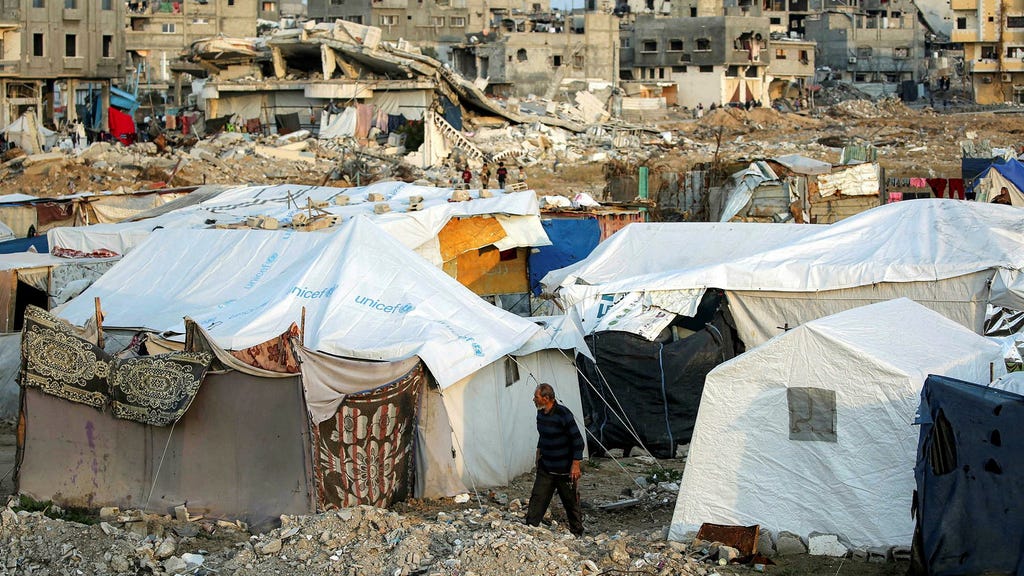The ceasefire between Israel and Hamas, brokered by Qatar, came into effect at 6:30 AM on Sunday, October 22nd, marking a tentative end to a brutal conflict that has exacted a heavy toll on both sides. The Qatari Foreign Ministry announced the truce via a post on X (formerly Twitter), offering a glimmer of hope for a sustained period of peace after weeks of intense fighting. This cessation of hostilities followed a vote by the Israeli government late Friday evening, formally accepting the terms of the ceasefire agreement. Concurrent with the truce implementation, the first three Israeli hostages held by Hamas were slated for release, a critical component of the negotiated agreement and a significant step towards de-escalation. This initial release represents a fraction of the over 200 hostages taken by Hamas during their initial incursion, but carries immense symbolic weight and sets the stage for further negotiations regarding the remaining captives.
The road to this ceasefire was fraught with complexities, involving intense diplomatic efforts by regional and international actors, particularly Egypt and Qatar. The conflict, sparked by Hamas’s unprecedented multi-front attack against Israel on October 7th, spiralled into a devastating exchange of fire, resulting in thousands of casualties on both sides, a majority of them Palestinian civilians trapped in the densely populated Gaza Strip. The sheer scale of the violence and the humanitarian crisis it engendered put immense pressure on the international community to broker a ceasefire and open channels for humanitarian aid. The agreement itself represents a delicate balance of interests, addressing both Israel’s security concerns and the urgent need for humanitarian relief in Gaza. The terms include provisions for the release of all Israeli hostages, but the details surrounding the timing and conditions for subsequent releases remain sensitive and subject to ongoing negotiations.
The release of the first three hostages marks a crucial confidence-building measure, demonstrating a tangible commitment by both sides to adhere to the agreed-upon terms. It also underscores the importance of mediation efforts, particularly those facilitated by Qatar, in bridging the deep divide between Israel and Hamas. The identities of the released hostages, while initially withheld, were later confirmed, adding a personal dimension to the truce and highlighting the human cost of the conflict. Their release brought mixed emotions in Israel – relief for the families reunited with their loved ones, tempered by the knowledge that many more hostages remain in captivity and the underlying issues fueling the conflict remain unresolved.
However, the fragility of the ceasefire is palpable. The deep-seated mistrust between Israel and Hamas, compounded by the complex political landscape in the region, casts a shadow over the prospects for long-term peace. The underlying causes of the conflict – the blockade of Gaza, the unresolved status of Palestinian territories, and the cycle of violence – remain unaddressed. There is a significant risk of renewed hostilities if the parties involved fail to build on the momentum created by the ceasefire and engage in meaningful dialogue aimed at addressing the root causes of the conflict. The current agreement represents a pause in the fighting, not a final resolution.
Looking ahead, the success of the ceasefire hinges on several key factors. The continued release of Israeli hostages will be paramount, as will the provision of desperately needed humanitarian aid to Gaza. The international community must play a crucial role in monitoring the implementation of the ceasefire, facilitating dialogue, and providing support for the reconstruction and rehabilitation of Gaza. Furthermore, addressing the underlying political and security concerns that fuel the conflict is essential. This includes exploring avenues for addressing the blockade of Gaza, fostering economic development in Palestinian territories, and promoting a political process that can lead to a just and lasting resolution to the Israeli-Palestinian conflict.
Ultimately, the current ceasefire represents a delicate and precarious opportunity to move away from the brink of further violence. While it offers a respite from the immediate carnage, the long-term prospects for peace remain uncertain. The coming days and weeks will be critical in determining whether this ceasefire can hold and pave the way for a more sustainable future for both Israelis and Palestinians. The international community must seize this moment to redouble its diplomatic efforts, support humanitarian initiatives, and work towards a comprehensive resolution that addresses the root causes of the conflict and brings lasting peace to the region. The alternative is a return to violence, with potentially even more devastating consequences.














